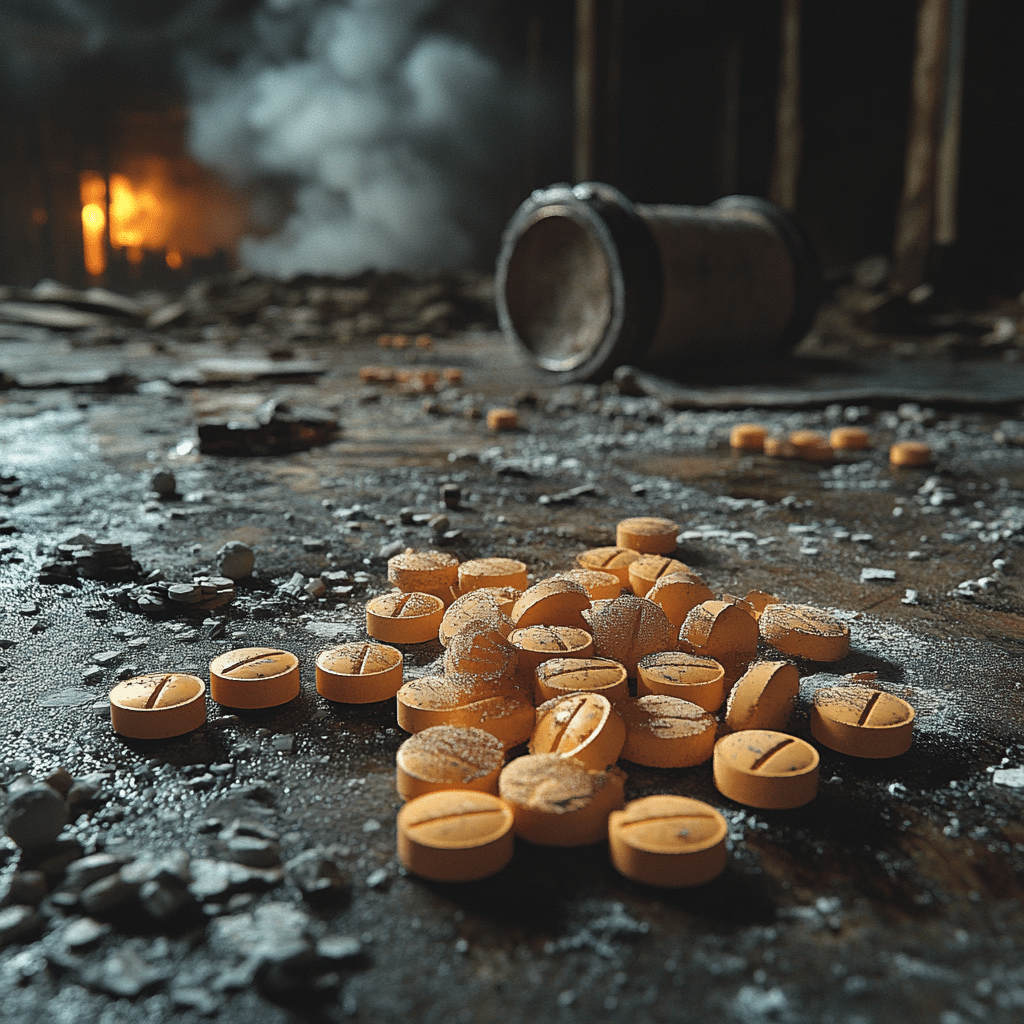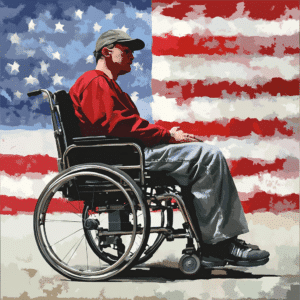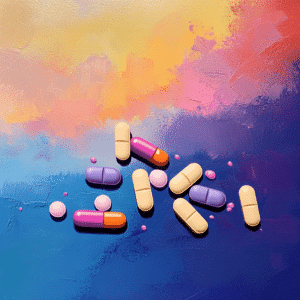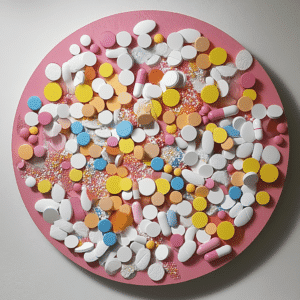Understanding substance abuse and its indicators is vital for parents striving to protect and support their children. Substance abuse can be insidious, with signs of substance abuse often subtle and easily mistaken for typical adolescent behavior. By familiarizing yourself with the key warning indicators, you can ensure your child receives the help they need before the situation becomes dire. This guide delves into the comprehensive analysis of substance abuse signs, with real-world examples and a detailed examination of behavioral, physical, and psychological symptoms.
1. Behavioral Indicators of Substance Abuse
Behavioral changes are often the first sign parents notice when a child is struggling with substance abuse. These can manifest in various ways and often signal deeper issues that require immediate attention.
Sudden Decline in Academic Performance
A marked drop in grades and a disinterest in school-related activities can be alarming. For instance, Michael Phelps, the renowned Olympic swimmer, famously struggled with substance abuse that impacted his public and private life, which began during his high school years. When a student’s academic performance plummets without a clear reason, it may be more than just a rough patch.
Isolation from Family and Friends
If your once-social child begins avoiding family dinners or withdrawing from long-time friends, this can be a red flag. Substance abuse often leads users to isolate themselves to hide their behavior. This form of isolation can be extremely damaging, leading to a cycle of loneliness and increased substance use.
Change in Social Circle
A sudden shift in friends can be indicative of new, harmful influences. For example, Demi Lovato has spoken about how her substance abuse issues were exacerbated by surrounding herself with people who enabled her behavior. Peer pressure can play a significant role in a child’s decision to experiment with drugs or alcohol. Monitoring your child’s social interactions can provide critical insights into their wellbeing.
2. Physical Symptoms of Substance Abuse
Physical warning signs of substance abuse are often more visible and can indicate a dependency on illegal substances.
Unexplained Weight Loss or Gain
Substance abuse can have significant effects on appetite and metabolism. Take the case of Amy Winehouse, whose drastic weight changes were symptoms of her struggle with alcohol and drug abuse. Unexplained weight fluctuations can be a silent alarm that something is deeply wrong.
Deterioration of Physical Appearance
Poor personal hygiene and a general lack of care for appearance can be strong indicators. Notable changes might include bloodshot eyes and frequent nosebleeds, as seen in the public struggles of celebrities like Lindsay Lohan. Changes in grooming habits, neglected personal care, and diminished interest in physical appearance are telltale signs.
Frequent Nosebleeds
This can especially be a sign of snorting drugs such as cocaine, which can deteriorate the nasal passage over time. Stories from rehab centers frequently cite nosebleeds as a common indication among new patients. Should you notice persistent nosebleeds alongside other warning signs, it might indicate more than just health issues.
| Category | Sign | Description |
| Impaired Control | Larger amounts/longer periods | Using or drinking larger amounts or over extended periods of time than initially planned. |
| Unsuccessful attempts to cut down | Continually wanting or unsuccessfully trying to reduce or control the use of drugs or alcohol. | |
| Significant time investment | Spending a considerable amount of time obtaining, using, or recovering from the effects of drugs or alcohol. | |
| Craving or strong desire | Experiencing intense cravings or a strong desire to use drugs or alcohol. | |
| Social Impairment | Failure to meet obligations | Being unable to fulfill responsibilities at home, work, or school due to substance use. |
| Relationship problems | Continuing to use despite problems it causes in relationships (friends, family, or significant others). | |
| Risky Use | Continuing use despite risks | Persisting in substance use even when it is causing or exacerbating physical or mental health problems. |
| Dangerous situations | Engaging in substance use in hazardous situations (e.g., driving under the influence). | |
| Pharmacological | Tolerance | Needing increasingly larger amounts of the substance to achieve the desired effect or experiencing diminished effects. |
| Withdrawal | Experiencing withdrawal symptoms when not using the substance, or using the substance to relieve or avoid these symptoms. |
3. Psychological Symptoms of Substance Abuse
Mental health often deteriorates with substance abuse, leading to various psychological indicators.
Mood Swings and Irritability
Erratic behavior, intense mood swings, and unwarranted aggression are common. The tragic case of Kurt Cobain, whose substance abuse issues exacerbated his mental health struggles, serves as a poignant reminder. Sudden emotional changes without clear triggers can be one of the critical signs of substance abuse.
Paranoia and Anxiety
Substance abuse can evoke severe anxiety and paranoia. Reports have noted how actor Shia LaBeouf’s erratic public behavior and paranoid tendencies were tied to his substance abuse. Elevated levels of anxiety and a persistent sense of fear are concerning signs that require attention.
Lack of Motivation
Apathy towards interests that once brought joy is a strong indicator. Whitney Houston’s well-documented battle with addiction led to a visible decline in her professional performances and personal engagements. When your child seems indifferent to their passions and responsibilities, it could signify deeper issues.
4. Real-Life Case Studies: Learning from Others
By examining the journeys of individuals in the public eye, we can better understand the early signs of substance abuse and implement preventative measures for our children.
Robert Downey Jr.
The renowned actor’s journey from severe addiction to redemption highlights the critical need for early intervention and supportive rehabilitation. His comeback story demonstrates that it’s possible to regain control with the right support and resources.
Drew Barrymore
Barrymore’s early exposure to drugs and subsequent recovery in her teens emphasizes that with the right support, a positive outcome is possible. Her story encourages parents to never give up on their children, no matter how dire the circumstances might appear.
A Future with Awareness and Support
Understanding the signs of substance abuse is the first step towards safeguarding your child’s future. Vigilance, compassion, and prompt action can make a crucial difference. Remember, substance abuse is not a battle fought alone – resources and communities exist to provide the necessary support.
By recognizing and addressing the warning indicators of substance abuse, you can help ensure that your child follows a safe and healthy path. Empower yourself with knowledge and be proactive in fostering an environment where open conversations about the dangers of substance abuse are normalized. Let the stories of those who have struggled and triumphed inspire and guide your efforts in supporting your child’s well-being.
Substance abuse doesn’t have to be a solitary fight. Organizations such as Mothers Against Addiction offer valuable resources To help You navigate tough times. Our community emphasizes the importance Of school education and raising drug-free Kids through meaningful interventions. Also, hire Speakers who can shed light on these issues from personal experience, and understand the role Of community in preventive Measures.
So let’s stay vigilant, informed, and compassionate – because our children’s future is worth every ounce of our effort. Remember, by catching the Signs Of substance abuse early, we can help steer them back to the light.
Signs of Substance Abuse
Identifying substance abuse can feel like solving a puzzle. Often, small changes may point to a larger issue. Understanding the key warning indicators can be critical for parents.
Behavioral Changes
Behavioral changes are often the first signs of substance abuse. A sudden shift in a child’s routine or personality might be a tip-off. A teenager who used to lead the school’s basketball team but now shows a stark disinterest can be alarming. Speaking of teams, did you know that the Ravens RB depth chart highlights just how dynamic and competitive the sports world can be? Well, observing your child’s behavioral patterns with that same level of scrutiny might reveal a lot.
Physical Symptoms
Physical symptoms can be another red flag. Unexplained weight loss, frequent nosebleeds, or bloodshot eyes could indicate more than just a bad day. In fact, certain physical changes might be as noticeable as the detailed financial changes documented in a 1040 schedule a form. If such stark transformations are visible, they shouldn’t be overlooked.
Secretive Behavior
Lastly, increasing secretive behavior is another clear indicator. If you find your child going out repeatedly without explaining or locking their bedroom door for extended periods, that could be a sign. Just as you’ve got to keep an eye on the ever-changing Ravens RB depth chart for updates, closely watching your child’s secretive habits could be equally crucial.
By keeping an eye on these signs of substance abuse, you’re not just being cautious; you’re being proactive in safeguarding your child’s future. And remember, small clues often speak volumes.
What are five warning signs of substance abuse?
Using or drinking larger amounts than planned, continually wanting to cut down but failing, spending a lot of time obtaining or recovering from substance use, craving substances, and being unable to meet obligations at home, work, or school.
What are 4 characteristic of substance abuse?
Impaired control, social impairment, risky use, and pharmacological criteria like tolerance and withdrawal are key characteristics.
What are the 4 symptoms of substance use disorder?
Unsuccessful attempts to cut down, large amounts over a long period, time spent on getting or recovering from use, and cravings are primary symptoms.
What are the 4 primary symptom clusters of substance abuse?
The four major symptom clusters are impaired control, social impairment, risky use, and pharmacological criteria.
What is the red flag for substance abuse?
A significant red flag is continuing to use the substance despite the problems it causes in relationships and daily life.
What does addiction feel like?
Addiction feels like a constant battle, with strong cravings and unsuccessful attempts to quit despite knowing the harm it causes.
What is a common indication of substance abuse?
A common indication is spending a lot of time getting, using, or recovering from the substance and ignoring responsibilities.
What are the 4 C’s of addiction?
The 4 C’s of addiction are craving, compulsion, loss of control, and continued use despite negative consequences.
What are the six features of addiction?
Features include craving, loss of control, compulsion to use, tolerance, withdrawal symptoms, and continued use despite negative outcomes.
What drugs cause personality changes?
Drugs like methamphetamine, cocaine, and alcohol often cause noticeable personality changes, including irritability and mood swings.
What does substance abuse disorder look like?
Substance use disorder often looks like impaired control over use, social problems, risky behaviors, and symptoms of tolerance and withdrawal.
What are the three most common forms of substance abuse?
The three most common forms are alcohol abuse, prescription drug abuse, and illicit drug abuse.
What are the warning signs of an addiction?
Warning signs include inability to meet responsibilities, craving the substance, continued use despite problems, and unsuccessful attempts to quit.
What are several signs that may indicate the presence of substance abuse?
Signs of substance abuse include large amounts of use, unsuccessful attempts to quit, spending lots of time obtaining or recovering from use, and cravings.
What is considered substance abuse?
Substance abuse is considered when a person can’t control their use, has social or legal problems due to use, and keeps using despite health issues.
What are the five factors of substance abuse?
Factors include genetic predisposition, environmental influences, peer pressure, stress, and availability of substances.
What are the 5 categories of substance abuse disorders?
The categories include alcohol, tobacco, stimulants, opioids, and hallucinogens.
What are 5 signs of an overdose?
Signs of overdose include unconsciousness, slow or stopped breathing, snoring or gurgling sounds, cold and clammy skin, and blue or purple fingernails or lips.
What are several signs that may indicate the presence of substance abuse?
Several signs include using in large amounts, craving, time spent on getting or recovering from use, and neglecting responsibilities.




























